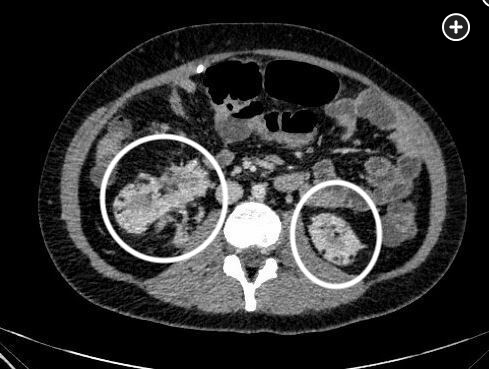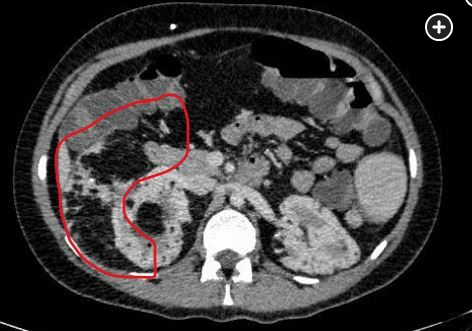lymphangioleiomyomatosis LAM is a rare female only disease with cystic lung lesions
- related: lymphangioleiomyomatosis LAM
- tags: #permanent #pulmonology
Lymphangioleiomyomatosis (LAM) is a rare lung disease characterized by diffuse cystic lesions.
The disorder is characterized by proliferation of atypical smooth muscle in the bronchovasculature, lymphatics, and interstitium of the lung. The most common form, sporadic LAM, is found in patients who do not have the genetic form of tuberous sclerosis complex (TSC)-associated LAM (TSC-LAM). The cause in both forms of this disease is mutations in the TSC genes coding for hamartin and tuberin, leading to constitutional activation of mammalian target of rapamycin (mTOR), which promotes inappropriate cell survival and growth. Identification of this pathway led to the use of effective therapy for LAM with mTOR inhibitors, such as sirolimus (rapamycin), which act via suppression of mTOR signaling.
Characteristic population includes young female (30s) with tuberous sclerosis (skin lesions), progressive dyspnea, recurrent pneumothorax, chylous pleural effusions, and characteristic CT findings of cysts.
Lymphangioleiomyomatosis is associated with renal angiomyolipoma and tuberous sclerosis.
Abdominal scans may reveal angiomyolipomas (AMLs), which are benign masses that contain blood vessels, muscle, and fat and that occur in approximately 30% of patients with sporadic LAM (compared with >80% in patients with TSC-LAM).



Chylous complications happens from obstruction of lymph system. Chylous fluid can be seen in multiple locations including pleural effusion, ascites, pericardium, urine. History of white material in urine, stool, bronchi, vaginal discharge can be clue to diagnosis. 1